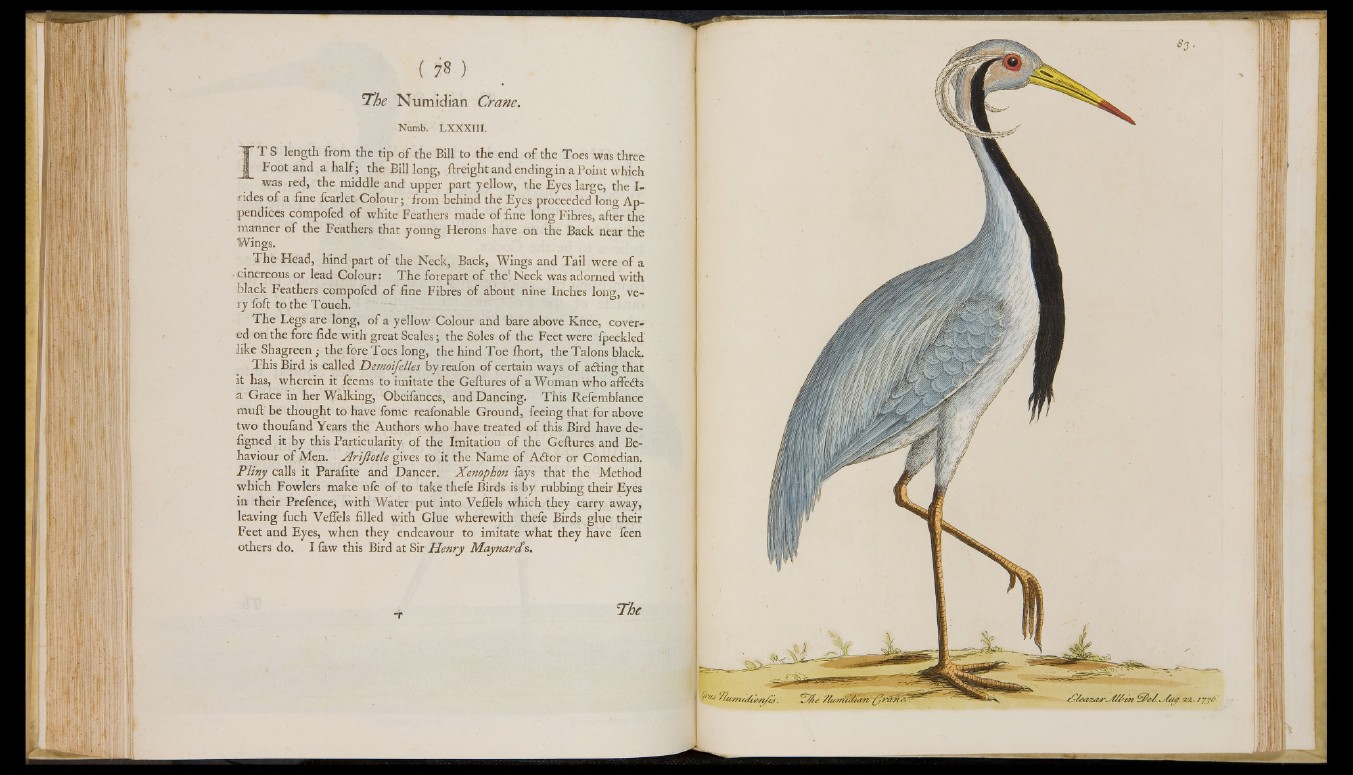
The Numidian Crane.
■Numb. L X X X I I I .
I T S length from the tip o f the Bill to the end of the Toes was three
Foot and a half; the Bill long, ftreight and ending in a Point which
was red, the middle and upper part yellow, the Eyes large, the I-
rides of a fine fcarlet Colour; from behind the Eyes proceeded long Appendices
compofed of white Feathers made of fine long Fibres, after the
manner of the Feathers that young Herons have on the Back near the
Wings.
The Head, hind part o f the Neck, Back, Wings and Tail were o f a
cinereous or lead Colour: The forepart of the! Neck was adorned with
black Feathers compofed of fine Fibres of about nine Inches long, very
loft to the Touch.
The Legs are long, o f a yellow Colour and bare above Knee, covered
on the fore fide with great Scales; the Soles of the Feet were fpeckled
like Shagreen ; the fore Toes long, the hind Toe ihort, the Talons black.
This Bird is called Demoifelles by reafon of certain ways of a ¿ting that
it has, wherein it feems to imitate the Geftures of a Woman who affedts
a Grace in her Walking, Obeiiances, and Dancing. This Refemblance
mull be thought to have lorne reafonable Ground, feeing that for above
two thoufand Years the Authors who have treated of this Bird have de-
figned it by this Particularity of the Imitation of the Geftures and Behaviour
o f Men. Arijlotle gives to it the Name of Aitor or Comedian.
Pliny calls it Parafite and Dancer. Xenophon fays that the Method
which Fowlers make ufe of to take thefe Birds is by rubbing their Eyes
in their Prelence, with Water put into Vellels which they carry away,
leaving fuch Veflels filled with Glue wherewith thefe Birds glue their
Feet and Eyes, when they endeavour to imitate what they have feen
others do. I faw this Bird at Sir Henry Maynard's.
T
A O & .za rA O d n 22.